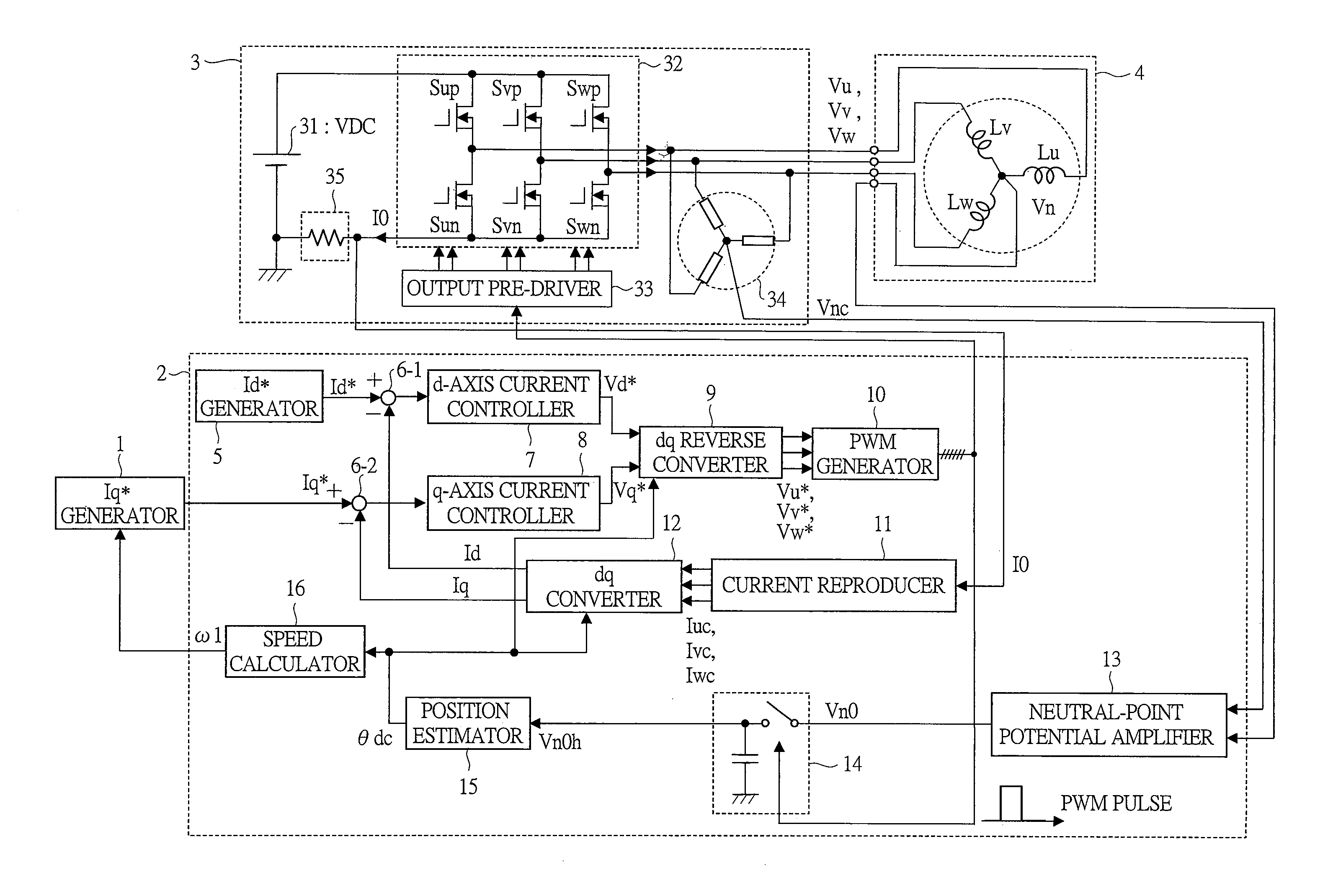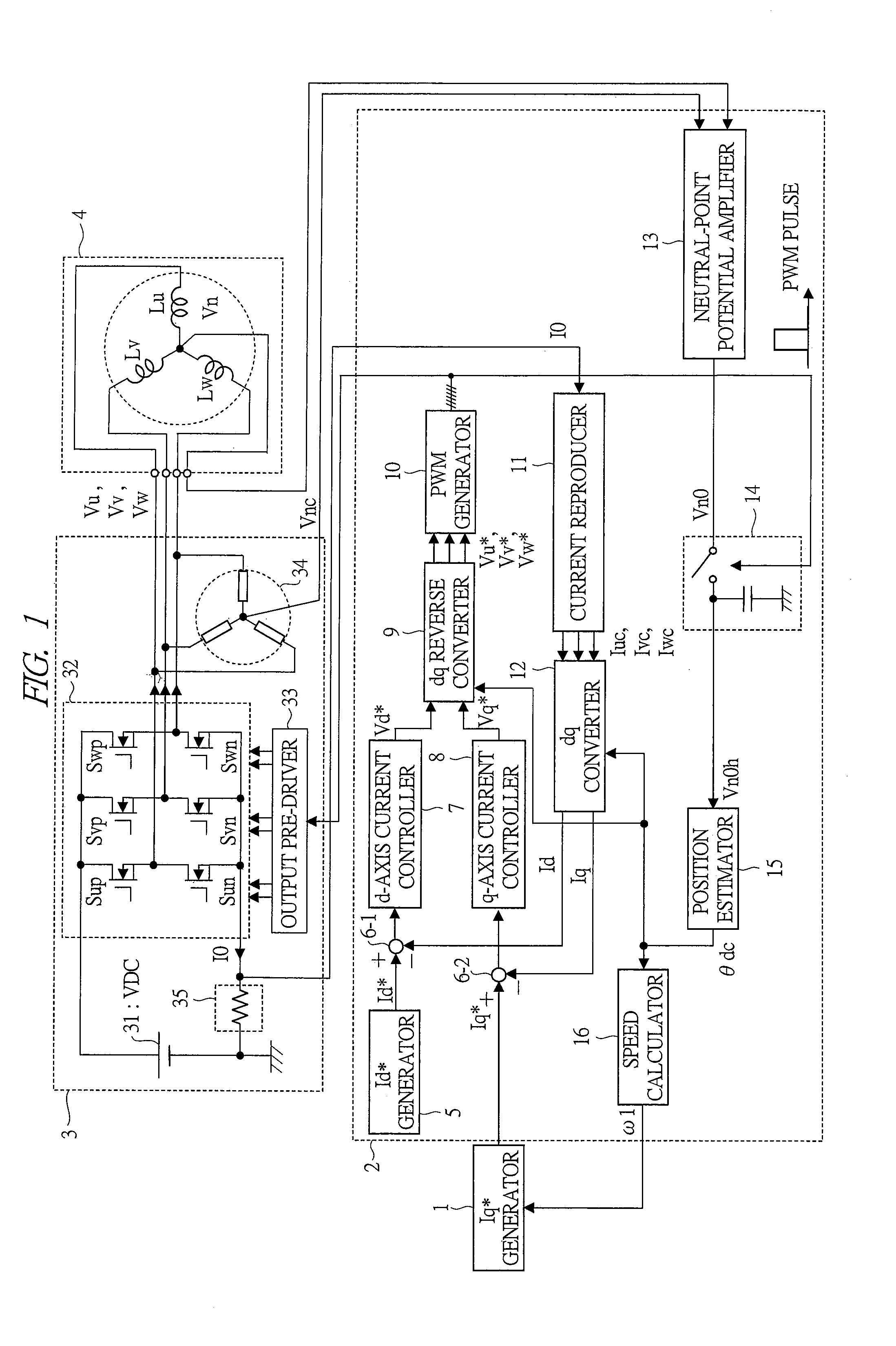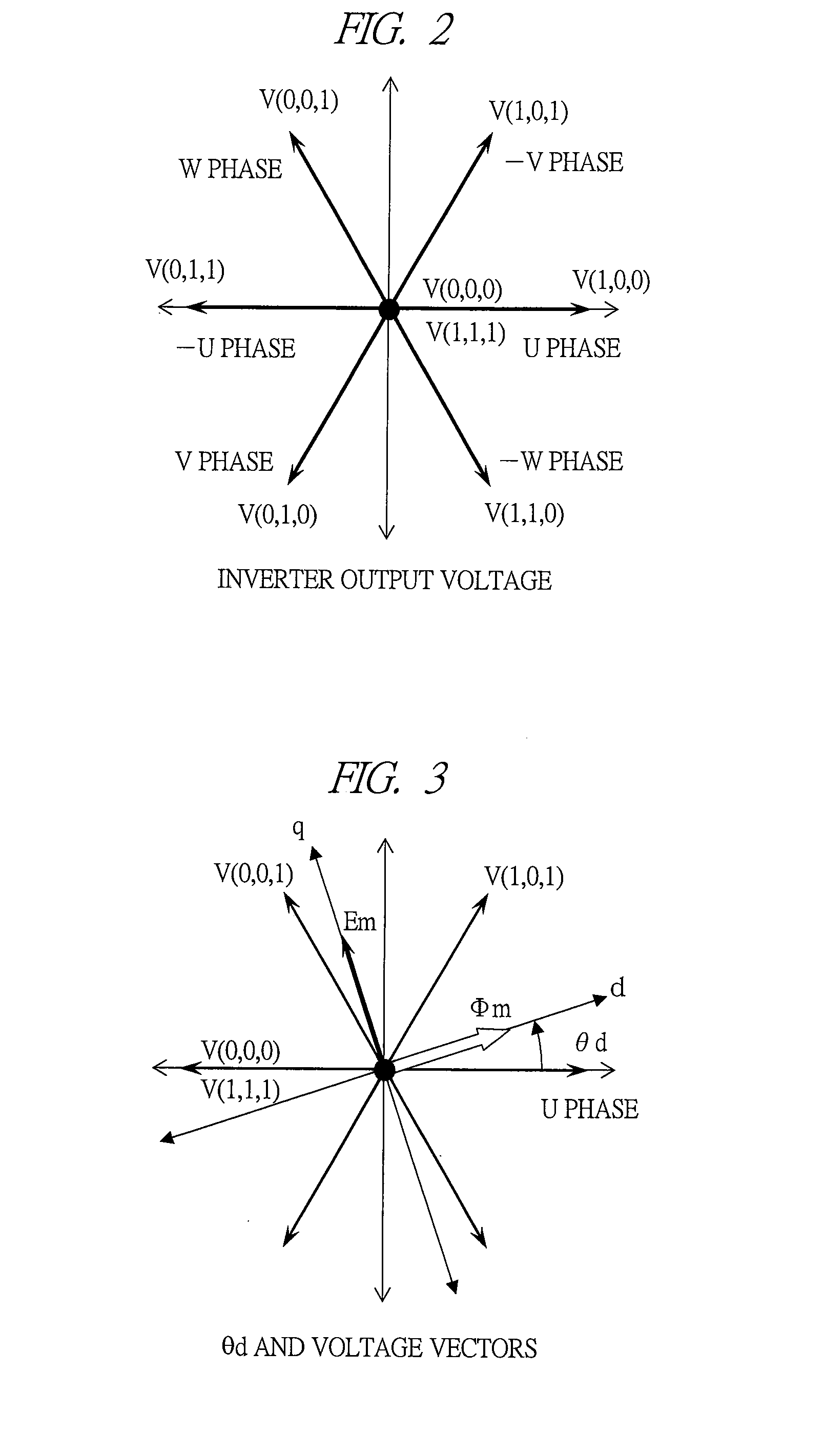Drive system of synchronous motor
a technology of synchronous motors and drive systems, applied in the direction of motor/generator/converter stoppers, dynamo-electric gear control, motor/generator/converter stoppers, etc., can solve the problems of vibration and noise, rotation pulsing, vibration and noise, and lowering detection sensitivity
- Summary
- Abstract
- Description
- Claims
- Application Information
AI Technical Summary
Benefits of technology
Problems solved by technology
Method used
Image
Examples
first embodiment
[0056]FIG. 1 is a block diagram showing a configuration of a motor drive system according to a first embodiment of the present invention.
[0057]An object of this motor drive system is to drive a permanent magnet motor (three-phase synchronous motor) 4. When roughly divided, the motor drive system comprises: an Iq* generator 1; a controller 2; an inverter 3 including an inverter main circuit 32 and a one-shunt current detector 35; and a permanent magnet motor 4 to be driven.
[0058]The Iq* generator 1 is a circuit which generates a current command Iq* corresponding to torque of a motor. The Iq* generator 1 is a controller positioned in an upper level of the controller 2. Usually, the generator has a mechanism to generate a necessary current command Iq* while observing an actual speed ω1 so that the number of rotations of the permanent magnet motor 4 reaches a predetermined speed. The current command Iq*, which is the output of the Iq* generator 1, is output to a subtractor 6-2 in the co...
second embodiment
[0113]Next, a second embodiment of the present invention will be described.
[0114]In the first embodiment, the reference level Vh is provided, this level is compared with the neutral-point potential Vn0h, and at a time when exceeding a predetermined value as a result of the comparison, the phase is updated. The reference level Vh in this case is a fixed value.
[0115]When the reference level Vh is a fixed value, the phase information is taken at every 60 degrees in terms of electrical angle, and the resolving power thereof is too low to drive the permanent magnet motor by an ideal sine-wave current. An object of the second embodiment is to solve this problem.
[0116]FIG. 9 is a block diagram showing a configuration of a position estimator 15B according to the second embodiment. In the present embodiment, the position estimator 15B is used instead of the position estimator 15 of the first embodiment.
[0117]The position estimator 15B comprises a switch 154, a first memory 155, a second memo...
third embodiment
[0123]Next, a third embodiment of the present invention will be described.
[0124]In the first and second embodiments, the PWM signal of the normal operation is used and the neutral-point potential is detected in synchronization with the PWM signal, thereby obtaining the position information. As described above, the variation of the neutral-point potential is dependent on the magnetic circuit characteristics in the permanent magnet motor 4. Therefore, the characteristics largely differ depending on specifications such as the capacity and the number of rotations of the permanent magnet motor 4. Depending on the motor structure, the case in which the detection sensitivity of the position information is insufficient is conceivable.
[0125]The present embodiment solves this problem. In the present embodiment, detection pulses of the neutral-point potential are intentionally inserted so as to create equipotential period insertion sampling periods, and the neutral-point potential is observed ...
PUM
 Login to View More
Login to View More Abstract
Description
Claims
Application Information
 Login to View More
Login to View More - R&D
- Intellectual Property
- Life Sciences
- Materials
- Tech Scout
- Unparalleled Data Quality
- Higher Quality Content
- 60% Fewer Hallucinations
Browse by: Latest US Patents, China's latest patents, Technical Efficacy Thesaurus, Application Domain, Technology Topic, Popular Technical Reports.
© 2025 PatSnap. All rights reserved.Legal|Privacy policy|Modern Slavery Act Transparency Statement|Sitemap|About US| Contact US: help@patsnap.com



